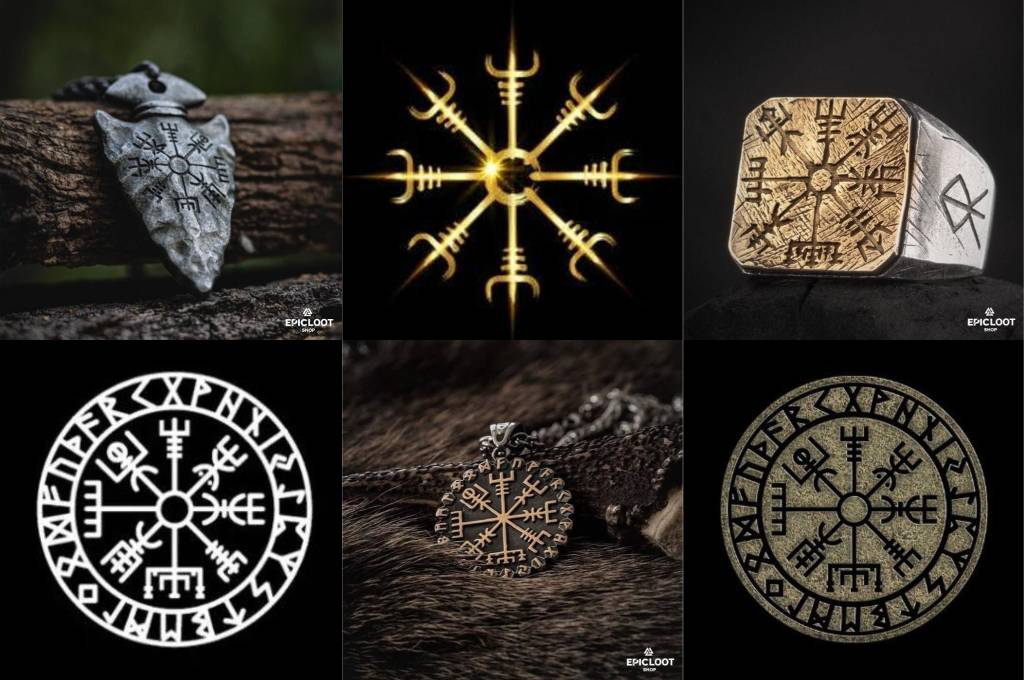Vegvísir: Unraveling the Myth of the ‘Viking Compass’
There's a Norse symbol, often associated with the Vikings, that has become increasingly prevalent in our culture – the Vegvísir. Known colloquially as "The Viking Compass" or "The Nordic Compass", this icon is said to help people avoid losing their path. Yet, one must question: is it genuinely a relic from the Viking Age?
For those drawn to Viking aesthetics and symbolisms, the Vegvísir will be a familiar sight. Deriving its name from "vegr" meaning "way" and "vísir" signifying "shower," the Vegvísir is thought to keep its bearer from straying off course. Its imagery graces tattoos, jewelry, illustrations, and even features in video games like Valheim. Despite this widespread usage, it's crucial to note that the Vegvísir isn't truly a Viking symbol.
Norse navigation or Norse hoax?
The first documented mention of the Vegvísir is found in the Huld Manuscript, penned by Geir Vigfusson in Iceland in 1860. This work features a plethora of galdrastafir (magical staves), with the Vegvísir accompanied by the description:
"Beri maður stafi þessa á sér villist maður ekki í hríðum né vondu veðri þó ókunnugur sá."
Translated by Justin Foster, it reads:
"Carry this sign with you and you won't get lost in storms or bad weather, even in unfamiliar surroundings."
Though 1860 may seem like a distant past, it's still considerably removed from the Viking Age that spanned roughly 793-1066 AD.
The puzzle remains: how did the Vegvísir come to be so entwined with the Vikings? Norse Scholar Jackson Crawford postulates that the symbol's appearance might play a pivotal role.
More than a Wayfinder: The Vegvísir
Contrary to what one might expect, seeking the Vegvísir in Reykjavík would be fruitless. The word Vegvísir, pronounced “VEGG-vee-seer”, translates to ‘sign post’ or ‘way finder’. It is depicted as an eight-pointed shape, each point adorned with a distinct pattern.
The Vegvísir isn't a physical compass. It serves as a symbol aimed at preventing loss of direction. Today, while we don't entrust these symbols to sea captains for good fortune on their voyages, the Vegvísir retains its philosophical power. Thus, it continues to be sported as tattoos, jewelry, and even integrated into video games such as Valheim.
Demystifying the Viking Compass
The name Vegvísir, or “way finder,” gives some insight into its symbolism. Interestingly, the Viking compass seems to share little historical connection with the Vikings. Its first reference appears in the Huld Manuscript, alongside other magical staves.
The Huld Manuscript, composed in Iceland in 1860 by Geir Vigfusson, explicitly states:
"Beri maður stafi þessa á sér villist maður ekki í hríðum né vondu veðri þó ókunnugur sá".
Translated, this reads:
"Carry this sign with you and you won't get lost in storms or bad weather, even in unfamiliar surroundings".
It's clear that the Viking Age (793 – 1066) predates the emergence of the Vegvísir by several centuries. Therefore, it's a stretch to claim it as an authentic Viking symbol.
Though the Vegvísir might not be a genuine Viking relic, its modern association with the Norse seafarers, explorers, and warriors remains. The symbolism of wayfinding, guidance, and resilience captured by the Vegvísir, continues to appeal to people around the globe today.






Leave a comment